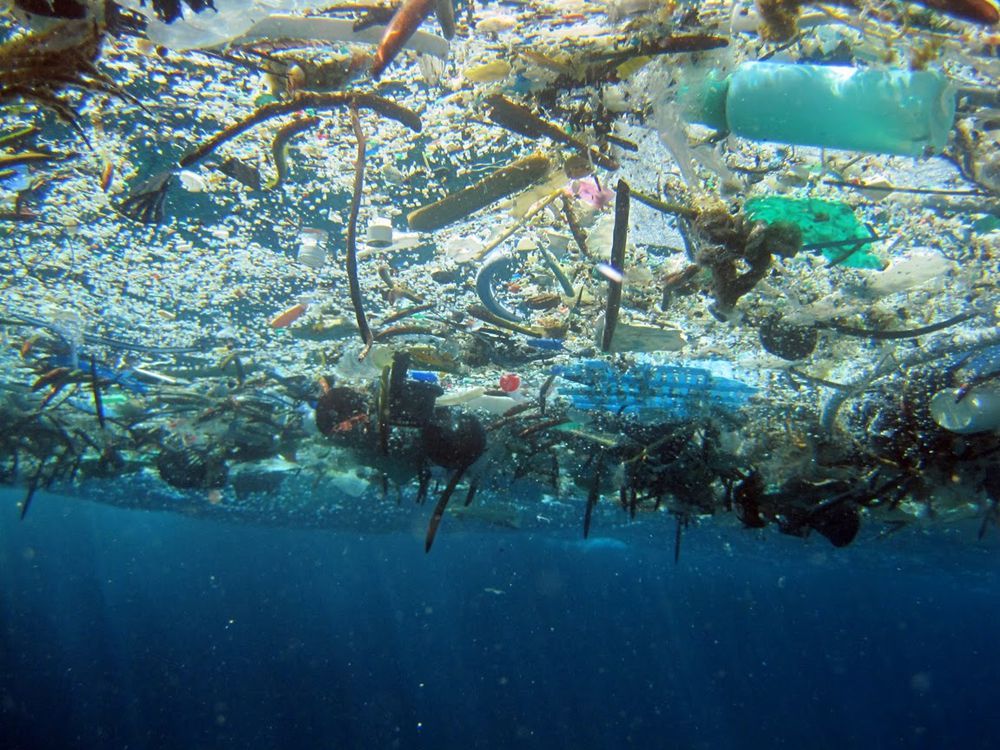Why Plastic is Such a Big Problem

We hear about how plastics are ruining the environment, however we rarely see the effects of it. It seems like a problem that's too big to change, but it couldn't be further from the truth! You and I can work towards making industries change in order to have a greater impact on the environment!
First up, let's discuss the problem. Traditional plastic found in the midsole of your shoes doesn't biodegrade, taking up to a thousand years just to break down. A lot of this will end up in our landfills or even worse, the ocean.
Great Pacific Garbage Patch

The Great Pacific Garbage Patch is a collection of marine debris in the North Pacific Ocean. Also known as the Pacific trash vortex, the garbage patch is actually two distinct collections of debris bounded by the massive North Pacific Subtropical Gyre.

The Great Pacific Garbage Patch sits near the surface of the ocean. Heavier debris will sink centimeters or even several meters beneath the surface, making the vortex’s area nearly impossible to measure.

Most debris in the Great Pacific Garbage Patch is plastic. Plastic is not biodegradable, meaning it does not disintegrate—it simply breaks into tinier and tinier pieces, known as microplastics. Microplastics are what makes the water of the Great Pacific Garbage Patch look like a cloudy soup.
Mixed in with microplastics are larger pieces of plastic. Most plastics are refuse from land activities in North American and Asia, though some plastics are accidentally dumped from oceangoing vessels. All the plastics on this page were culled from the Great Pacific Garbage Patch.

Marine debris can prevent algae and plankton, the photosynthetic producers in the marine food web, from receiving enough sunlight to create nutrients. When these tiny organisms are threatened, the entire food web is put at risk—first-order consumers that eat the plankton, such as jellies; second-order consumers that eat the jellies, such as turtles; and apex predators such as sharks.

The marine debris of the Great Pacific Garbage Patch can devastate marine life in the North Pacific Subtropical Gyre. The stomach contents of this unfortunate albatross include plastic marine debris fed to the chick by its parents.
Garbage patches are found in the calm, stable centers of many of the world's ocean gyres. Even smaller bodies of water, such as the Mediterranean and North Seas, are developing their own garbage patches along heavily trafficked shipping lanes.

We Can Change This
I know it sounds dire, but here's the good news: We can change this! Many groups are actively working on cleaning up the Great Pacific Garbage Patch and their efforts are laudable. Most importantly, we need to stop contributing to non-biodegradable plastics in the environment. This is where Johnny shoes comes in. By making sustainable choices in purchasing decisions, we can directly impact our environmental footprint.
Johnny shoes biodegrade in 3 short years rather than the typical 1,000! They also release an apple seed which will help offset your carbon footprint by creating oxygen. Lastly, Johnny plants a tree on your behalf every time you purchase a pair because we're in this together.
Humans, we've made a bit of a mess of things. But if there's one thing that humanity is known for - it's our ability to create new and innovative solutions.




